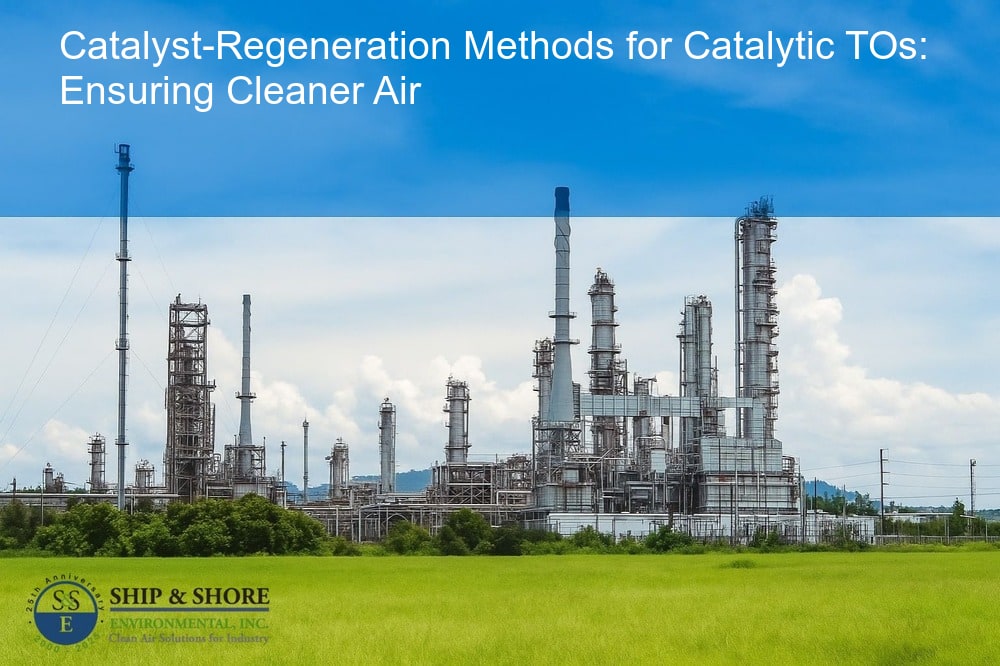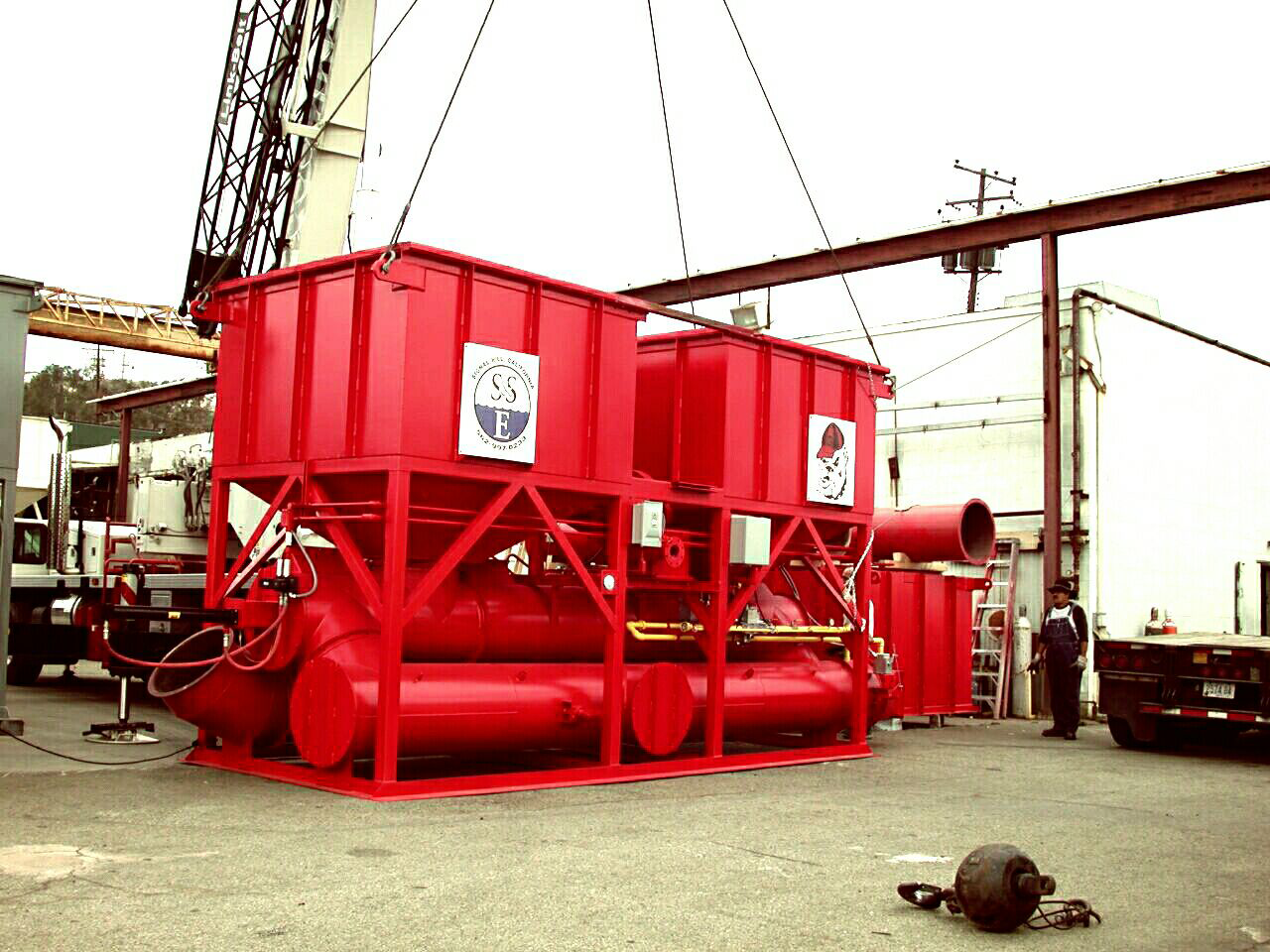
Unlocking Efficiency: Catalyst-Regeneration Methods for Catalytic TOs
August 8, 2025 6:47 amThe Crucial Role of Catalytic Thermal Oxidizers for Air Pollution Control
Catalytic thermal oxidizers (TOs) stand at the forefront of combating air pollution, offering a reliable and efficient solution for controlling volatile organic compounds (VOCs) and hazardous air pollutants (HAPs). Given the increasing emphasis on environmental sustainability, the use of catalytic TOs is integral to achieving stringent air quality standards. A crucial aspect of enhancing the performance and longevity of these systems lies in understanding and implementing effective catalyst-regeneration methods for catalytic TOs. By focusing on this, we ensure our operations remain environmentally compliant while optimizing operational efficiency.
Understanding the Need for Catalyst Regeneration
The catalysts in catalytic TOs play a pivotal role in facilitating the oxidation of pollutants at lower temperatures, thus ensuring efficient energy usage and reduced emissions. However, over time, these catalysts can lose their activity due to poisoning, fouling, or thermal degradation. This degradation underscores the need for regular catalyst regeneration to restore the catalyst’s activity and extend the overall lifespan of the thermal oxidizer. Effective regeneration not only maintains optimal system performance but also aligns with our commitment to sustainable environmental practices.
Demystifying Catalyst-Regeneration Methods for Catalytic TOs
Catalyst regeneration can often seem like a complex and daunting task, but understanding the fundamental techniques and processes can demystify it. Catalyst-regeneration methods for catalytic TOs involve a variety of approaches designed to remove contaminants and restore the catalytic activity. Techniques such as thermal regeneration, chemical washing, and steam treatment are commonly employed. Each method has its specific advantages and applicability depending on the nature of the fouling and the type of catalyst used. By becoming familiar with these methods, we can make informed decisions that enhance the performance and efficiency of our catalytic TOs.
The Science Behind Catalyst Regeneration: A Process Overview
Catalyst regeneration plays an integral role in maintaining the efficiency and effectiveness of catalytic thermal oxidizers (TOs) used for air pollution control. The primary function of a catalytic TO is to oxidize hazardous air pollutants (HAPs) and volatile organic compounds (VOCs) into less harmful substances, like carbon dioxide and water vapor. However, over time, the catalyst can become deactivated due to the accumulation of contaminants and poisoning agents. This is where catalyst-regeneration methods for catalytic TOs come into play. Regeneration involves removing these impurities to restore the catalyst’s active sites. By understanding the underlying science, we can ensure the reliability and longevity of our catalytic TOs.
Key Techniques Utilized in The Regeneration of Catalysts for Catalytic TOs
Various catalyst-regeneration methods can be applied depending on the type of catalyst and the nature of the contamination. These methods generally involve physical, chemical, or thermal techniques, or a combination of these:
- Thermal Treatment: This method involves heating the catalyst to high temperatures to combust off deposited contaminants. It is particularly effective for removing carbon-based deposits.
- Chemical Cleaning: Chemical agents are used to dissolve and remove inorganic contaminants. This technique is useful for addressing catalysts poisoned by sulfur or other inorganic poisons.
- Steam Regeneration: Involves passing hot steam through the catalyst bed, which helps in removing hydrocarbons and rejuvenating the active sites.
- High-Temperature Oxidation: Primarily used for metal catalysts, wherein a controlled oxidation process at elevated temperatures renews the catalyst’s active surface.
The selection of a specific method depends on the type of catalyst, the nature of the contamination, and the desired level of restoration. Combining different methods can often yield the best results, thereby maximizing the catalyst’s restored activity.
Relevance of Catalyst Regeneration to Environmental Compliance and Operational Efficiency
Catalyst regeneration is not merely a maintenance activity; it is essential for ensuring compliance with stringent environmental regulations. Well-maintained catalysts are more effective in capturing and converting pollutants, thereby helping facilities meet air quality standards. Moreover, efficient catalytic TOs translate to reduced operational costs. Regenerated catalysts require less energy to maintain optimal conversion rates, contributing to lower fuel costs and operational downtime.
Moreover, extending the life of catalysts through regular regeneration reduces the frequency and cost of catalyst replacement. This sustainability aspect aligns with our broader environmental goals and enhances our reputation as a responsible corporate citizen. Therefore, adopting efficient catalyst-regeneration methods for catalytic TOs is a practical and ecological imperative.
Did you know? Regenerating catalysts in Thermal Oxidizers not only curbs air pollution efficiently but also significantly cuts operational costs by prolonging equipment lifespan.
Catalyst Regeneration: A Sustainable Approach for Prolonging Oxidizer Lifespan
The ongoing commitment to maintaining the efficiency and longevity of catalytic oxidizers cannot be overstated. Catalyst regeneration emerges as a vital strategy in this quest. By regularly employing appropriate regeneration techniques, we ensure that our catalytic thermal oxidizers remain effective in breaking down harmful pollutants. This not only reduces environmental impact but also aligns with our mission to provide sustainable solutions for air pollution control. Through our expertise in catalyst-regeneration methods for catalytic TOs, we achieve a delicate balance between performance and environmental stewardship.
Making A Case for Regular Maintenance of Catalytic TOs using Catalyst-Regeneration Methods
Regular maintenance of catalytic oxidizers, underscored by periodic catalyst regeneration, is pivotal for operational efficiency and regulatory compliance. These regeneration practices enable us to restore the active sites of catalysts, thus maintaining the oxidizers’ capability to function at optimal levels. This proactive approach minimizes downtime, reduces operational costs, and maximizes the return on investment for our clients. By integrating rigorous catalyst-regeneration methods for catalytic TOs into our maintenance routines, we not only enhance the lifespan of the oxidizers but also boost their efficiency in pollutant removal.
A Look to the Future: Innovations in Catalyst-Regeneration Methods for Catalytic TOs
The field of catalyst regeneration is continuously evolving, with new methods and technologies emerging to address the complexities of modern pollutant challenges. Innovations in catalyst regeneration promise even more efficient and cost-effective solutions for maintaining catalytic thermal oxidizers. As we look to the future, our commitment remains steadfast in adopting and adapting these advancements. By staying at the forefront of these developments, we ensure that our systems are not only compliant with stringent environmental standards but also spearhead the industry’s best practices in air pollution control. Embracing these innovations in catalyst-regeneration methods for catalytic TOs is crucial for both environmental sustainability and operational excellence.
FAQ
What is catalyst regeneration in catalytic thermal oxidizers?
Catalyst regeneration is a process that revitalizes the catalyst within catalytic thermal oxidizers, restoring its efficiency in decomposing hazardous pollutants. Over time, these catalysts can become less effective due to fouling or poisoning. Through regeneration, we renew their activity and ensure our systems adequately control air pollution, thereby promoting sustainable operations.
How often should catalyst regeneration be performed?
The frequency of catalyst regeneration largely depends on the operational conditions and the types of pollutants being processed. Consequently, we recommend a thorough assessment of the oxidizer’s performance periodically to determine the ideal regeneration schedule. By doing so, we ensure the continued adherence to environmental regulations and the consistent functionality of the equipment.
Why is catalyst regeneration important for maintaining environmental compliance?
Catalyst regeneration plays an essential role in the performance of catalytic thermal oxidizers, which are critical in complying with environmental standards for pollutant emissions. Effectively regenerating the catalyst ensures the oxidizer operates at peak efficiency, thus avoiding the release of harmful contaminants into the atmosphere. This allows us to uphold our environmental commitments while also maintaining compliance with regulatory requirements.
What innovations are emerging in catalyst-regeneration techniques?
The landscape of catalyst regeneration is dynamic, with ongoing research leading to newer techniques that promise increased effectiveness and cost efficiency. Among these innovations, some focus on optimizing the utilization of the active components within catalysts, while others aim to automate and enhance the precision of the regeneration process. Such advancements hold the potential to revolutionize how we maintain catalytic oxidizers, ensuring they operate sustainably and effectively for longer durations.
Can catalyst regeneration improve the operational efficiency of catalytic oxidizers?
Absolutely, catalyst regeneration has a direct impact on operational efficiency. By reviving the catalyst’s activity, we enhance the oxidizer’s capability to process and neutralize pollutants effectively. This reduces energy consumption and operational costs, as a fully functioning catalyst demands less auxiliary fuel to achieve the required oxidation temperatures. Moreover, regular regeneration minimizes the likelihood of unscheduled downtimes, making the overall running of the plant more reliable and predictable.
Categorised in: Blog

